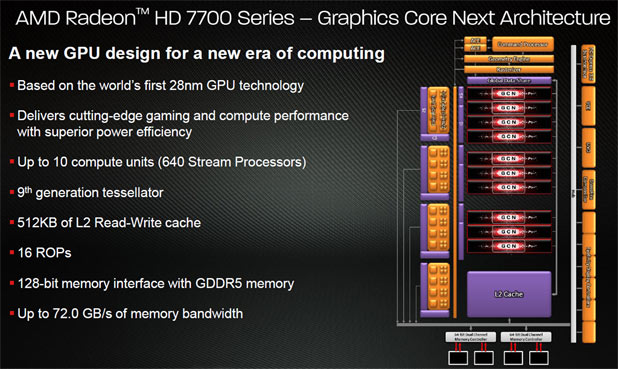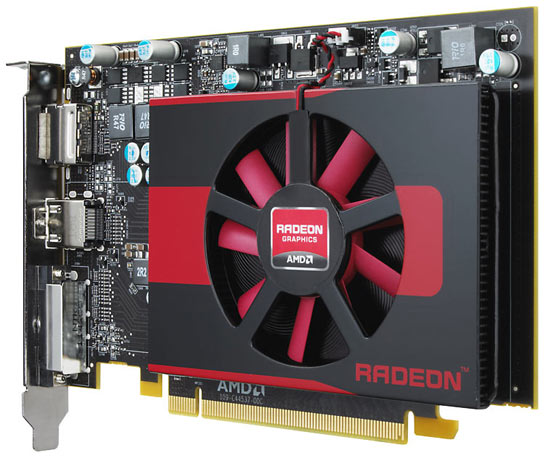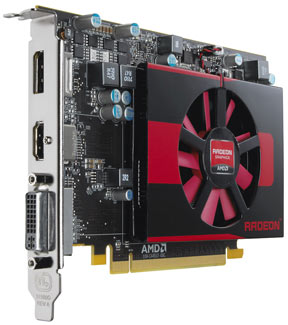AMD Radeon HD 7770 and 7750 GPU Reviews
Specifications and the Cards
As we’ve mentioned, the Cape Verde GPU powering the Radeon HD 7700 series cards is based on the Graphics Core Next (GCN) architecture and has the same feature set as its higher-end counterpart found on the Radeon HD 7900 series.
Like Tahiti, Cape Verde is comprised of roughly 1.5 billion transistors and is manufactured using TSMC’s advanced 28nm process node. The Cape Verde GPU, however, is outfitted with a maximum of 640 stream processors (to Tahiti’s 2,048) arranged in 10 compute units with 64 stream processors each. Cape Verde also sports 512KB of L2 R/W cache, 16 ROPs, 40 texture units, and a 128-bit GDDR5 memory interface. According to AMD, the die size of the chip is a relatively small 123 square millimeters.
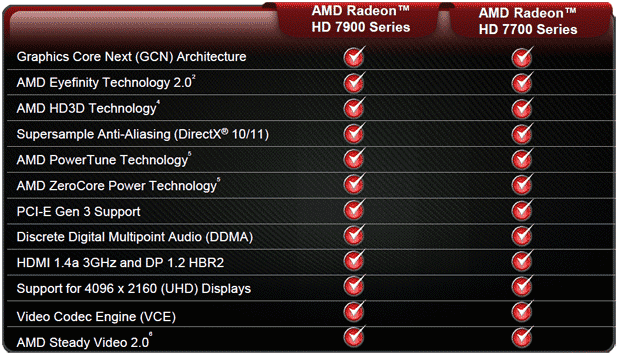
Although Cape Verde is pared down to target more mainstream market segments, it doesn’t skimp on any features. With fewer stream processors, ROPs, and texture units, and a narrower memory interface, performance will be lower than Tahiti, but its features remain unchanged as you can see in the feature comparison above.

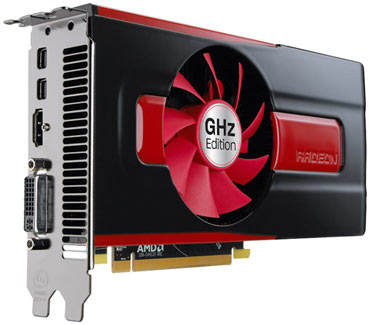
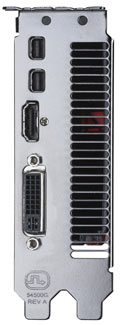
AMD Radeon HD 7770 GHz Edition
The card you see here is the Radeon HD 7770 GHz Edition. The Radeon HD 7770 is outfitted with a Cape Verde GPU with all of its functional units intact and enabled. As the full name of this card suggests, the Radeon HD 7770 GHz Edition’s GPU is clocked at a cool 1GHz—a first for a reference GPU from AMD. With a 1GHz Cape Verde GPU paired to 1GB of GDDR5 memory clocked at 1.25GHz (4.5Gbps data rate), the Radeon HD 7770 offers up 1.28 TFLOPS of compute performance, with a texture fillrate of 40GT/s, a pixel fillrate of 16 GP/s, and peak memory bandwidth of 72GB/s.
The card is outfitted with a dual-slot cooler, but a relatively short 8.25” PCB. With only an 80W TDP, the Radeon HD 7770 requires only a single 6-pin PCI Express power feed, and its outputs consist of a single HDMI output, two mini-DisplayPort 1.2 outputs, and one Dual-Link DVI output.
The Radeon HD 7750 has the same output configuration as the Radeon HD 7770, but its Cape Verde GPU is pared down somewhat. The GPU at the heart of the Radeon HD 7750 has one of its compute units disabled, so “only” 512 stream processors and 32 texture units are enabled. The GPU is also clocked lower at 800MHz. The Radeon HD 7750’s differences result in 819 GFLOPS (giga vs. tera) of compute performance, with peak texture and pixel fillrates of 25.6 GT/s and 12.8 GP/s, respectively. The card’s memory, however, is clocked at the very same 1.25GHz as the Radeon HD 7770, so memory bandwidth remains unchanged.
With its pared-down, lower clocked, GPU, the Radeon HD 7750 requires less power than the Radeon HD 7770—55w vs. 80w. As such, the Radeon HD 7750 does not require and additional power feeds. The standard 75 Watt power budget provided by a PEG slot is more than enough. The Radeon HD 7750 also has a much shorter 7” PCB and a single-slot cooler design.

